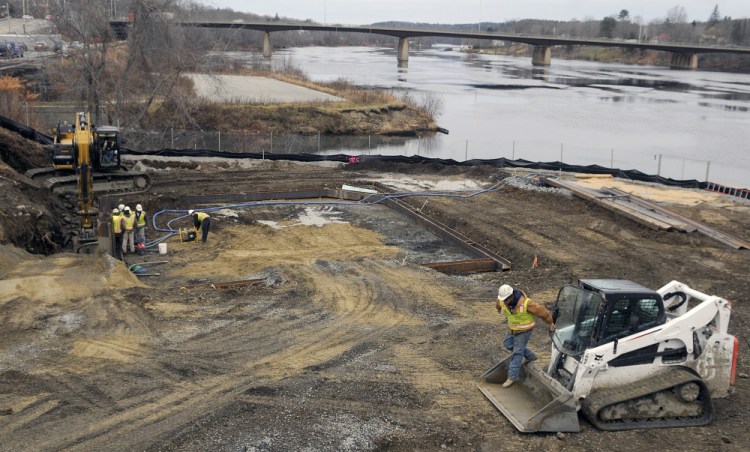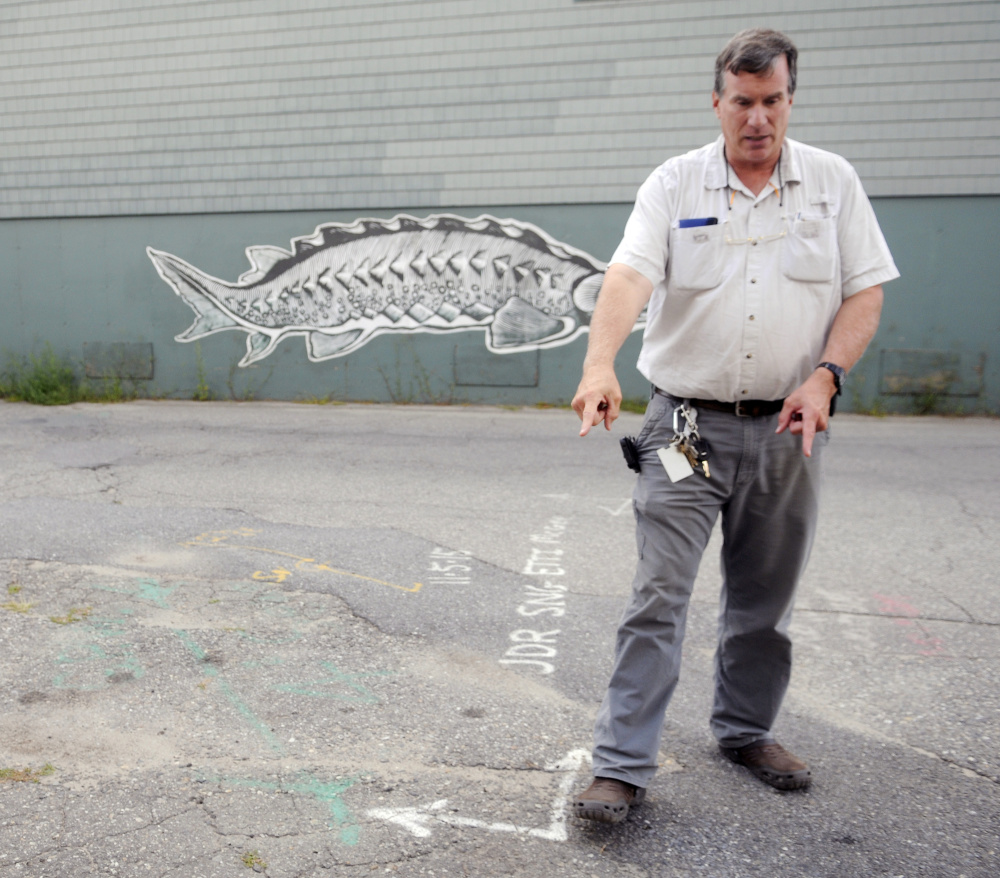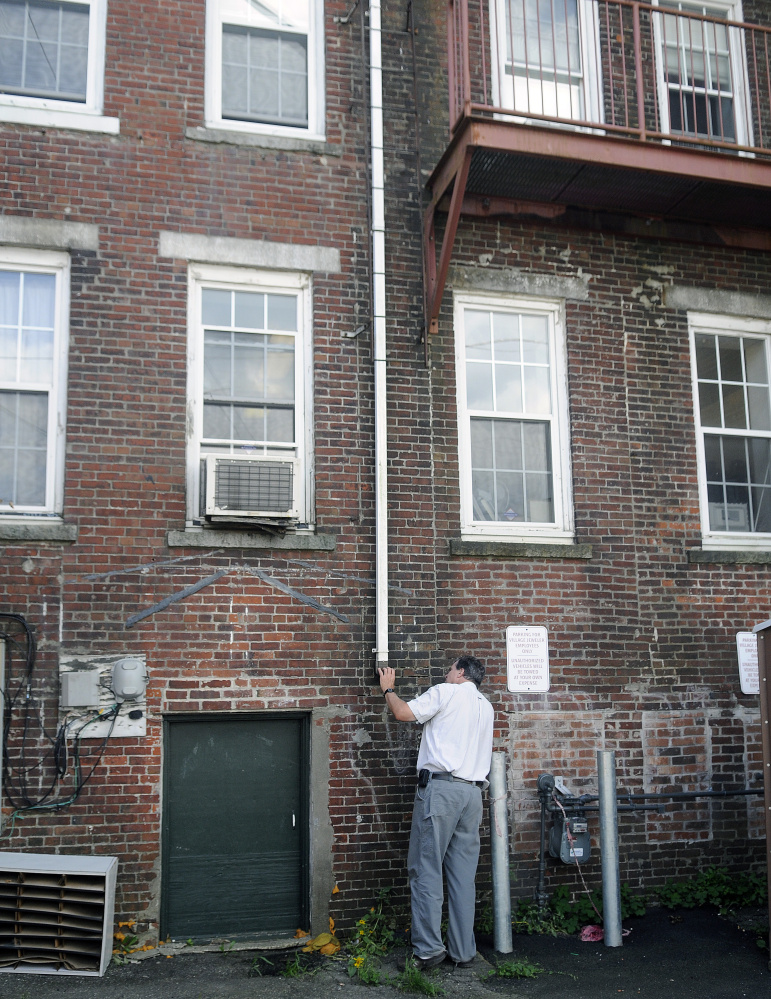GARDINER — Illegal sewer connections in this small southern Kennebec County city pose problems to sanitary district and city officials and to homeowners alike.
So says Doug Clark, Gardiner’s wastewater treatment director, who is working to get a handle on a big one as Gardiner’s $4 million sewer rehabilitation and upgrade project on the waterfront starts to wind down in the coming months.
In homes across the city, sump pumps, basement drains or French drains carry the moisture they collect in basements into the city’s sewer lines, where it combines with household sewage and travels to the treatment plant in south Gardiner.
Now Clark is pushing for more awareness of illegal sewer connections as a key factor in the way city sewer treatment process.
“I’m not a sewer cop,” Clark said Thursday. “I can’t knock on everyone’s door to check their connections. This is for the most part on the honor system.”
Although he hasn’t run the calculations, Clark said illegal connections have contributed to the city’s need for the combined sewer overflow project that’s nearing completion in Waterfront Park.
Contractors have been working since last fall to install what is essentially a 400,000-gallon holding tank. The tank is designed to catch and hold flows in the sewer system that exceed the capacity of the pump station that’s located in Waterfront Park until the demand on the system subsides. Then the tank’s contents are cycled back to the pump station, and from there they go to the treatment plant.
“If we have a big rainstorm in a short amount of time, we can see within 10 minutes that the flow lines are going up,” he said.
Before this project, the flow would back up in the sewer lines downtown, hit a weir and pour into the Kennebec River.
When the project is done, the tank will catch those flows, and the city will be in compliance with state and federal clean water requirements that drive much of what the wastewater treatment plant does, he said.
Clark’s best guess is that up to 75 percent of the city’s homes have such illegal connections. While it was once accepted practice, that’s no longer allowed.
“Most homes built in the 1940s and 1950s have foundation drains around the perimeter of the houses and a roof leader coming down and tying into the sanitary sewer,” he said.
Cassie Soucy and her husband moved to Gardiner about a year and a half ago from West Gardiner. The change introduced the concept of paying for water and sewer service to the couple. When they lived in West Gardiner, they had a well and a septic system.
Soucy said the sump pump in the basement takes care of floods when it rains, but she’s not sure where it discharges.
“My husband might know, but I don’t,” she said Wednesday.
She also said she hasn’t noticed the advisory that Clark has included on the quarterly sewer bills asking homeowners to comply with the city’s Sewer Use Ordinance by getting rid of illegal connections. Although he has the ability to issue fines, Clark hasn’t issued one — yet.
Clark said homeowners have a compelling reason to comply: insurance. An illegal connection usually means an open drain, so when a street main plugs up, sewage can back up into basements.
“I’ve seen basements fill up to the daylight windows,” he said. Basements are typically where washers, dryers, furnaces and oil tanks are located; sometimes they are finished living areas.
“Other than your house burning down,” he said, “there is no greater calamity that can happen to your house.”
Typically, after a backup, city workers will clear the main and the basements will drain, he said. If a homeowner files a claim, an insurance adjuster will check with the city and a dye test will determine whether the home had an illegal connection to the sewer system, and possibly no trap to keep sewer gases out of the home. If it does, he said, that claim can be denied.
If there is no illegal connection, the homeowner can turn to the city for cleanup.
“Which position would you rather be in?” he said.
Illegal connections also create a treatment problem that’s generally known as inflow and infiltration. Generally, this added volume of water increases what the treatment plant has to treat, although it doesn’t require the same attention as household sewage.
While most residents can divert the flow of their basement drains or sump pumps to their yards, buildings in the city’s downtown area don’t have that option.
Clark said the next project officials are considering is building a stormwater intercept line in the Arcade parking lot between Water Street and Cobbosseecontee Stream to take care of stormwater that’s currently collected by roof drains and probably is directed into the sewage system.
“We’ll have to see how we come out with this tank,” he said.
Jessica Lowell — 621-5632
Twitter: @JLowellKJ
Copy the Story LinkSend questions/comments to the editors.





Success. Please wait for the page to reload. If the page does not reload within 5 seconds, please refresh the page.
Enter your email and password to access comments.
Hi, to comment on stories you must . This profile is in addition to your subscription and website login.
Already have a commenting profile? .
Invalid username/password.
Please check your email to confirm and complete your registration.
Only subscribers are eligible to post comments. Please subscribe or login first for digital access. Here’s why.
Use the form below to reset your password. When you've submitted your account email, we will send an email with a reset code.